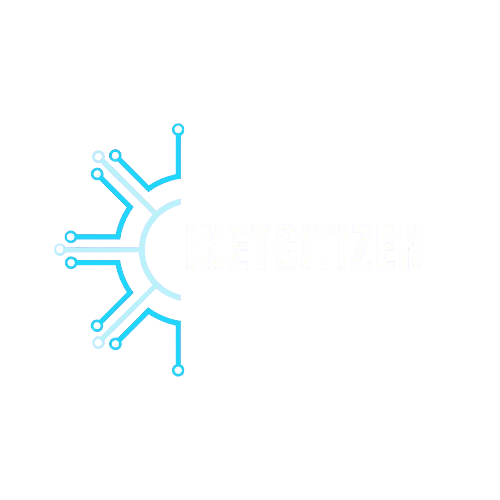Appointment setter training is a critical component of any sales and business development strategy. Appointment setters act as the bridge between a business and its potential clients, ensuring that leads are properly nurtured and scheduled for meaningful conversations. Proper training equips appointment setters with the skills, knowledge, and confidence to approach prospects effectively, handle objections gracefully, and consistently secure appointments that convert into sales. Without structured training, even highly motivated individuals may struggle to deliver consistent results. By investing in comprehensive appointment setter training, businesses can improve lead conversion rates, reduce wasted time, and create a more professional first impression with potential clients. The right training also fosters a sense of confidence and professionalism, which translates directly into better communication with prospects. Understanding the purpose and goals of appointment setter training is the first step toward building a high-performing team.
Understanding Appointment Setter Training
Appointment setter training focuses on teaching individuals how to effectively communicate with potential clients, engage them in conversation, and schedule meaningful appointments for the sales team. This type of training is not just about cold calling; it emphasizes building relationships, understanding client needs, and delivering value in every interaction. Appointment setters need to develop strong communication skills, active listening, and the ability to adapt their pitch depending on the prospect’s responses. One of the most important outcomes of training is ensuring that appointment setters understand their role as a key part of the sales process. Training also helps them become comfortable with handling rejection and turning objections into opportunities for further engagement. A well-trained appointment setter is able to maintain professionalism, even under pressure, and consistently meet or exceed performance expectations. Investing time in proper training ensures that the appointment setters become reliable and skilled contributors to the sales pipeline.
Core Components of Appointment Setter Training
Effective appointment setter training covers several core areas that collectively enhance the performance of the team. Communication and active listening are the foundation of every training program, allowing appointment setters to truly understand prospects’ needs. Training includes mastering both cold calling and warm calling techniques, teaching individuals how to approach unfamiliar leads and nurture ongoing conversations. Email and digital outreach strategies are also crucial, as modern appointment setters often combine phone calls with well-crafted email sequences. Another core component is objection handling; appointment setters must learn to respond to common objections professionally, keeping the conversation moving forward. Time management and organizational skills are emphasized to ensure setters can maintain high-volume outreach without compromising quality. Developing these skills through consistent practice and coaching ensures that every interaction is productive and aligned with business goals.
Designing a Comprehensive Training Program
Creating an effective appointment setter training program requires a structured approach that covers both theory and practical application. Beginners should start with foundational training, including understanding the sales process, product knowledge, and communication techniques. More experienced individuals benefit from advanced modules focusing on personalization strategies and multi-channel outreach. Role-playing exercises and practical simulations are vital for giving trainees hands-on experience in real-world scenarios. Performance metrics such as call volume, appointment rate, and conversion rates should be clearly defined and monitored. Feedback sessions allow trainers to identify areas for improvement and reinforce best practices. A comprehensive training program also includes ongoing learning opportunities to ensure that appointment setters remain sharp, adaptable, and continuously improving their performance over time.
Tools and Technology for Appointment Setters
Modern appointment setter training goes beyond soft skills, incorporating tools and technology that streamline workflow and enhance productivity. Customer Relationship Management (CRM) systems are essential, helping appointment setters track interactions, schedule appointments, and maintain accurate records. Automation tools assist with follow-ups, reminders, and email campaigns, freeing up time for more personalized outreach. Analytics and reporting software enables managers to track performance metrics and identify opportunities for improvement. Communication tools such as video conferencing, messaging apps, and VoIP systems ensure seamless contact with prospects. Integrating these technologies into training allows appointment setters to become comfortable with the tools they will use daily. By combining skill development with technology training, businesses can equip their appointment setters to operate efficiently and professionally.
Advanced Techniques for High-Performing Appointment Setters
Advanced training techniques help appointment setters maximize their effectiveness and increase appointment acceptance rates. Personalization is key, as customized messages demonstrate genuine interest and engagement with prospects. Data-driven insights allow appointment setters to target the right leads, improving overall efficiency and reducing wasted effort. Multi-channel outreach—including phone calls, emails, and social media—enhances visibility and increases the likelihood of scheduling appointments. Building rapport quickly is another essential skill; establishing trust in the first few minutes of a conversation increases the chances of a positive outcome. Successful appointment setters also develop resilience, learning to remain motivated despite setbacks or repeated rejections. Understanding the buyer’s mindset and tailoring conversations accordingly ensures that interactions are always relevant and compelling. By mastering these advanced techniques, appointment setters can achieve consistent, high-level performance.
Common Challenges in Appointment Setter Training
Even with structured training, appointment setters face common challenges that can affect performance. Fear of rejection is a frequent obstacle, often causing hesitation or reluctance to engage with prospects. Managing high-volume outreach without burnout requires effective time management and stress-relief strategies. Adapting to different industries and client types can be difficult, as each prospect may have unique expectations and communication preferences. Maintaining motivation over time is essential, as repetitive tasks and occasional setbacks can lead to disengagement. Training programs must address these challenges through practical exercises, supportive coaching, and ongoing encouragement. Clear guidelines, achievable goals, and recognition for effort help appointment setters stay focused and committed. By addressing these challenges head-on, training programs can produce confident and capable professionals who thrive in their roles.
Measuring Training Effectiveness
Measuring the impact of appointment setter training ensures that programs deliver real results and help teams improve continuously. Key performance indicators (KPIs) such as the number of appointments scheduled, conversion rates, and lead response times provide concrete metrics for evaluation. Tracking these KPIs over time allows managers to identify strengths, weaknesses, and areas for improvement. Continuous coaching sessions help reinforce skills, address gaps, and encourage professional growth. Feedback loops, including peer reviews and manager observations, provide valuable insights for ongoing training adjustments. Training effectiveness can also be measured through increased revenue or improved client engagement, demonstrating a direct correlation between skill development and business outcomes. Maintaining a culture of measurement and improvement ensures that appointment setter training remains relevant, impactful, and aligned with organizational goals.
Frequently Asked Questions (FAQ)
How long does it take to train an appointment setter?
Training timelines vary depending on the individual’s experience and the complexity of the sales process, but most comprehensive programs take between four to eight weeks.
What are the most effective methods for appointment setter training?
A combination of role-playing, practical exercises, mentorship, and technology integration tends to produce the best results.
Can appointment setter training be done remotely?
Yes, many programs now incorporate virtual training sessions, online modules, and digital simulations for remote teams.
How do you measure if an appointment setter is successful?
Success is measured through KPIs like appointments scheduled, conversion rates, follow-up effectiveness, and overall contribution to sales revenue.
What common mistakes should be avoided during training?
Neglecting soft skills, failing to provide ongoing feedback, ignoring objection-handling strategies, and overloading trainees with information can reduce training effectiveness.
Takeaway
Appointment setter training is an essential investment for any business looking to improve lead generation, scheduling efficiency, and overall sales performance. By focusing on communication skills, objection handling, technology integration, and advanced techniques, businesses can create high-performing appointment setters capable of driving meaningful results. Structured programs, practical exercises, and continuous feedback ensure that every team member develops the confidence, professionalism, and resilience needed to succeed. With proper training, appointment setters not only increase appointment acceptance rates but also contribute significantly to the growth and reputation of the business. Investing in training is not just about learning a skill—it is about building a foundation for long-term success in sales and business development.










